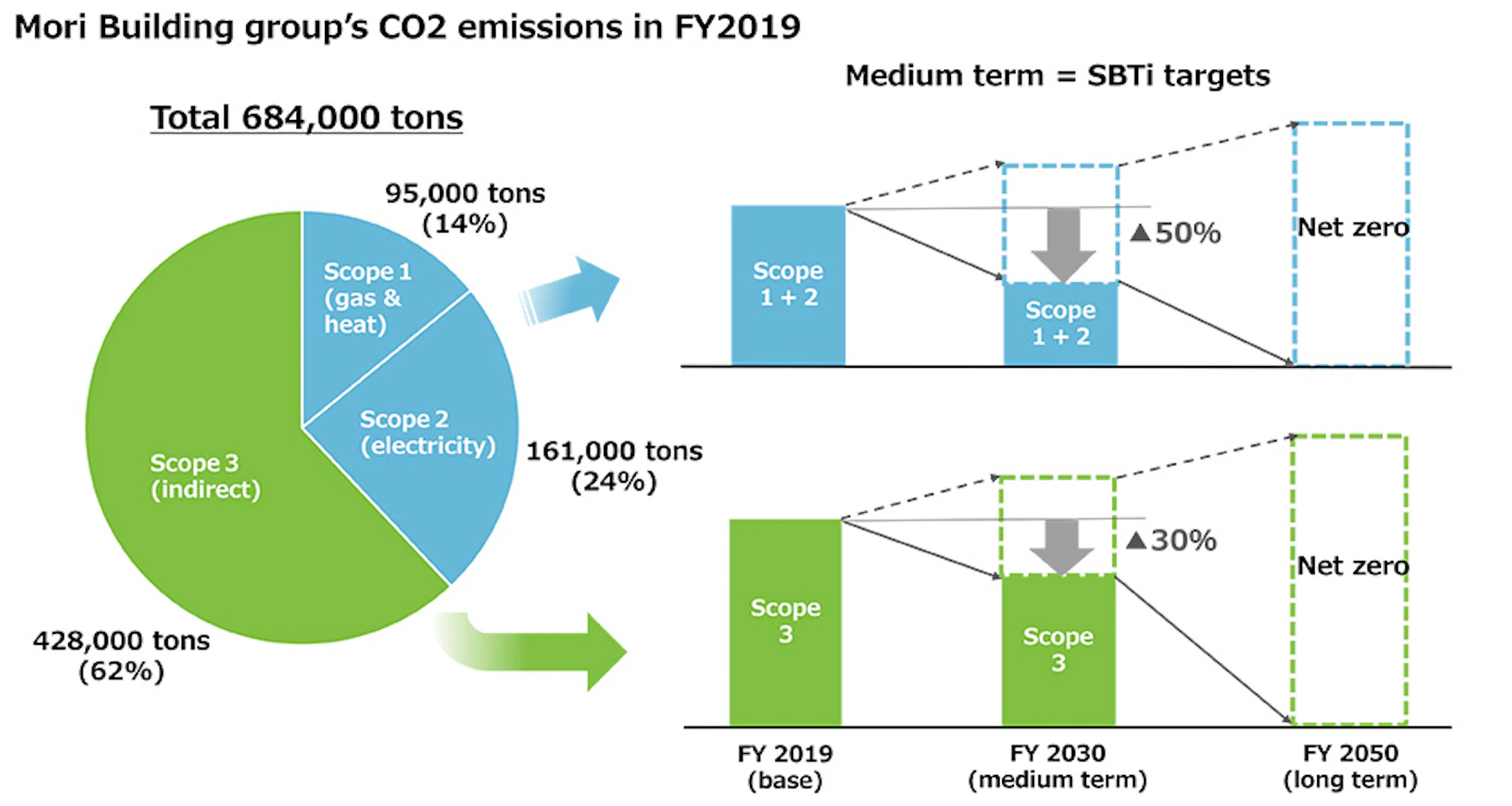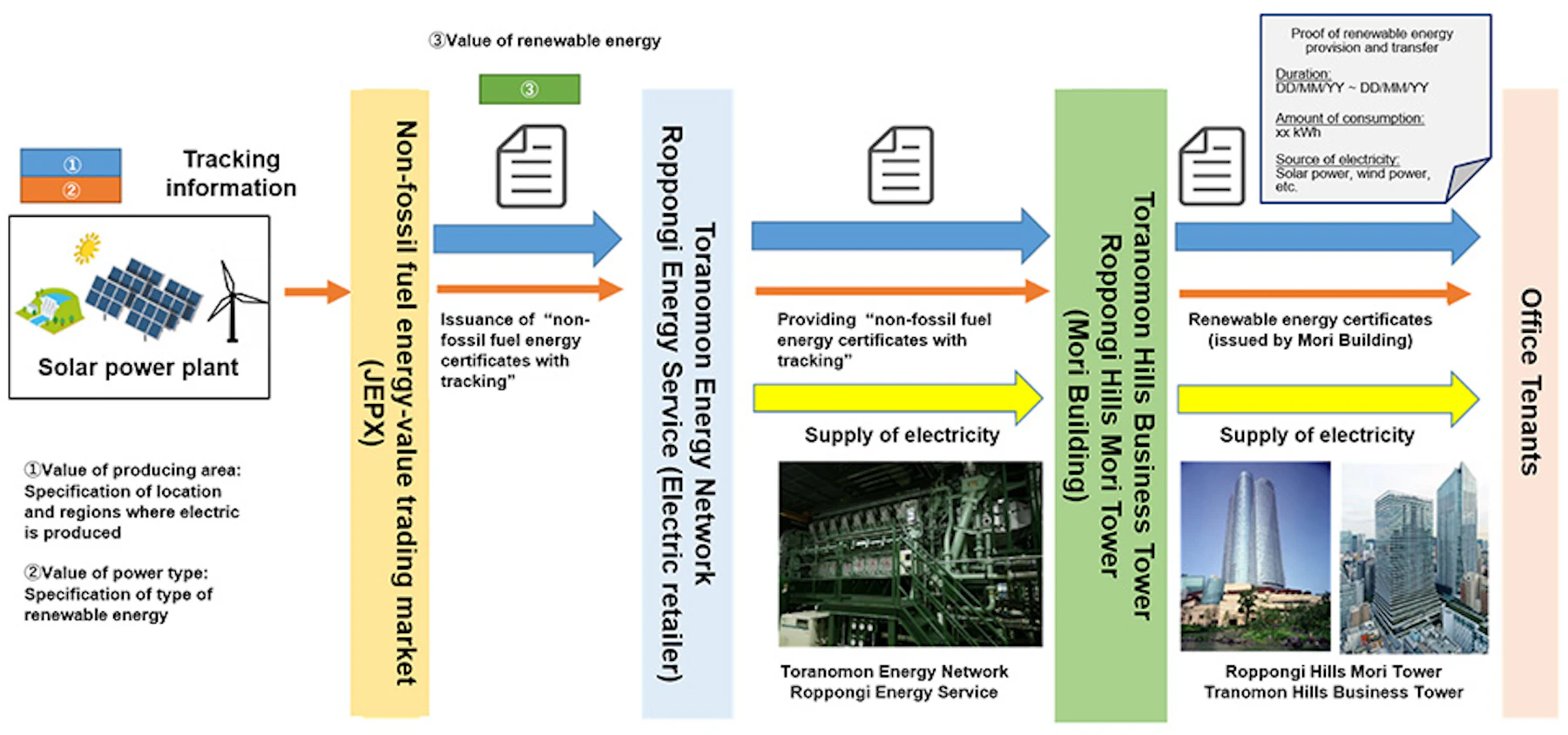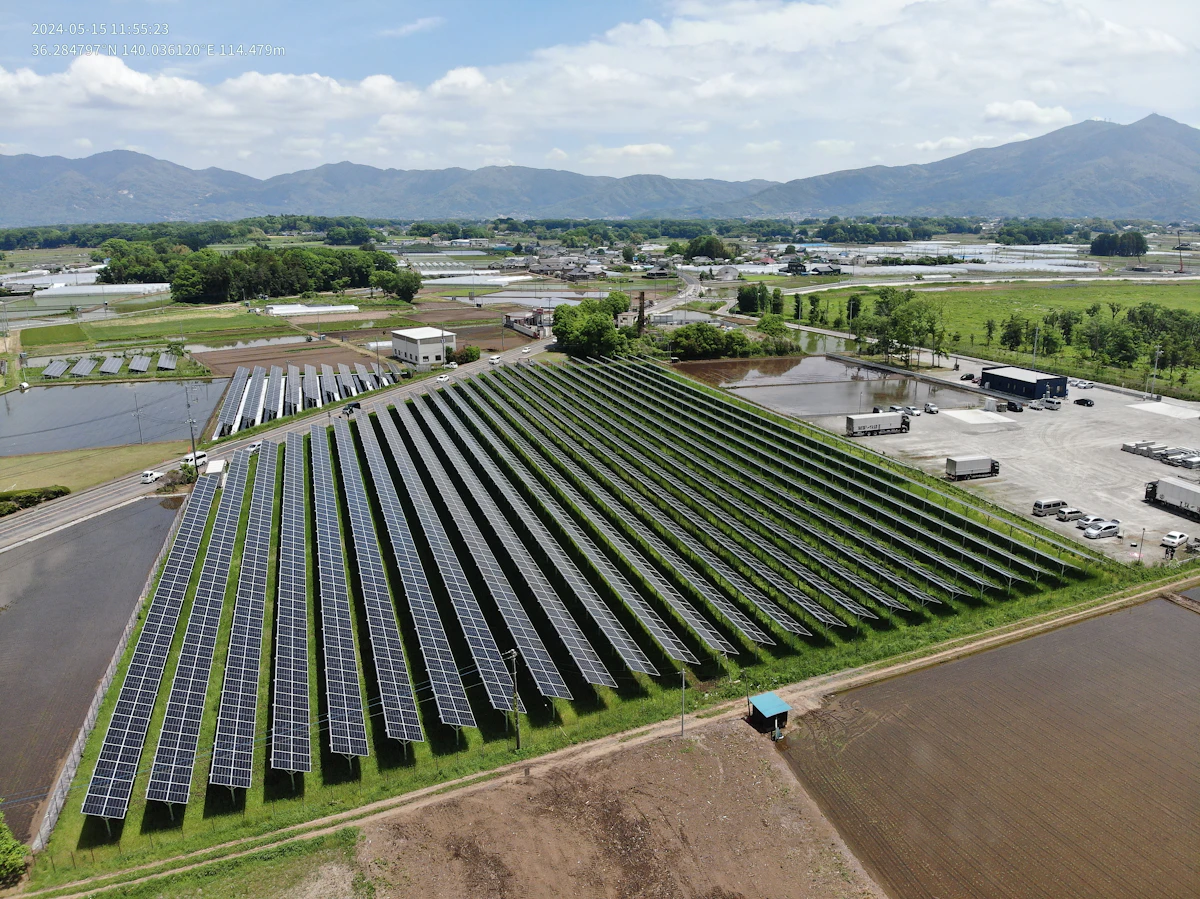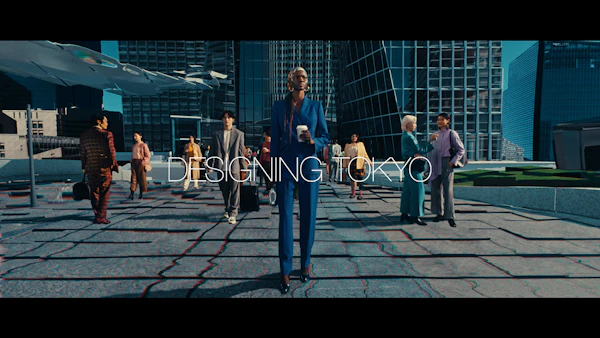Energy
Decarbonized Cities that Use Energy Efficiently
Mixed-use compact cities like our Hills urban complexes generally boast outstanding energy efficiency. The reason is that since energy is used differently depending on the facility—whether it is an office, residence, hotel, or retail facility—you can level out the energy load by combining them effectively. Our compact cities also employ state-of-the-art systems that efficiently manage energy for the entire complex.
For example, at Azabudai Hills we installed AI technology in the High-Efficiency Energy Center (in-house power generator) located under Mori JP Tower. By utilizing an optimal operations plan that predicts the energy load based on weather forests and operation performance data, multiple buildings at the complex are supplied with electricity and heat. By using regional energy network, we improve energy efficiency.
Mori Building sets decarbonization goals for the entire corporate group and actively works to achieve them. Our goals are to reduce Scope 1 (greenhouse gas emissions we generate directly) and Scope 2 emissions (emissions generated indirectly from electricity and heat we use) by 50% by 2030 compared to 2019, and Scope 3 emissions (emissions generated indirectly in the supply chain related to our businesses) by 30% by 2030. We aim to achieve net-zero emissions for all scopes by 2050.

Mori Building group’s CO2 emissions in FY2019
Striving for 100% Renewable Energy
As a measure to reduce Scope 1 and 2 emissions, Mori Building has begun efforts to switch to electricity used at its urban complexes to renewable energy sources. In 2019, Roppongi Hills Mori Tower became the first in the industry to start supplying renewable power to tenants. Since then we have been sequentially switching to renewable power at our owned properties. Currently, over 80% of power demand at our properties in Japan is from renewable energy. Tenant companies can track the renewable power they use with the Energy Web System, a system proprietorially developed and operated by Mori Building. The system also provides information such as energy sources. Our goal is to achieve 100% renewable energy by 2030.
As part of our commitment to create and nurture cities, we are also working to produce renewable energy ourselves. In February 2024, we built our first solar power generation facility. The electricity generated there supplies Toranomon Hills Mori Tower. Going forward, we will develop power generation facilities to increase the percentage of in-house generated renewable power supplied to Mori Building properties.

Supplying renewable electricity to tenants using non-fossil certificates

Agricultural Solar Power Plant, Chikusei City

Agricultural Solar Power Plant, Tochigi City
Top Ranking Environmental Certification
The environmental performance of Mori Building’s developments rank among the best both domestically and globally. This is demonstrated with environmental certifications, so even environmentally advanced global companies can become tenants without worry. Many of our developments have obtained rank S in the Japanese certification CASBEE. Azabudai Hills and Toranomon Hills have also obtained the LEED international certification. We expect to obtain Platinum (the highest rank) in LEED-ND for the entire development area of these complexes and in LEED-CS for individual buildings.
Recently, we have also been working to obtain WELL international certification to promote the well-being of the people who live and work at our developments. WELL is a certification program that assesses the environmental performance, comfort, and mental and physical health of workers and residents at buildings. Thanks to such efforts, Azabudai Hills Mori JP Tower and Toranomon Hills Station Tower have obtained Platinum (the highest rank).


